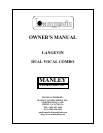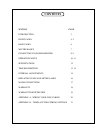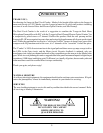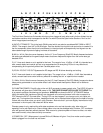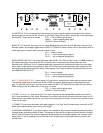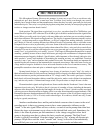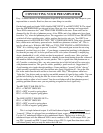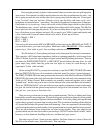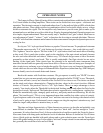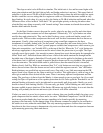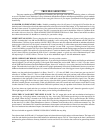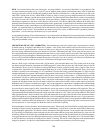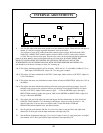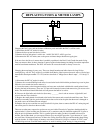
MIC PRE BASICS
7
This Microphone Preamp, like most mic preamps, is pretty easy to use. First we can discuss why
outboard mic pre's have become "a must have item" in almost every studio even though your console
probably has a bunch of them and that manufacturer claims that they are really great and you don't need
outboard mic pre's. Then, why is everybody buying them, using them, and why are most people going back
to tubes or vintage transistor based circuits?
Good question. The signal from a typical mic is very low - anywhere from 20 to 70 dB below your
normal line level signals. 95% of the time 30 to 40 dB of gain is all that is needed to boost the signal to line
levels. Where you really need a lot of gain is with most ribbon mics and when you are recording chamber
music from a distance. Mic signals are fragile and raw. The fragility is apparent when one compares various
mic pre's - each preamp seems to sound different - no EQ, no compression, nothing elaborate - just basic
gain. Maybe it is the mic reacting different into different circuits. Each preamp, tube or solid state seems
to impart a flavour or color (or personality) of its own. Some of these flavours are subtle and some are not.
A few engineers have an array of mic pre's and use them almost like effects - using each for a certain flavor
as needed. The rest of us only have the budget for one or two great mic pre's so we tend to choose one that
sounds "best", or is priced for us, or is used by "xxxxxx". The Langevin Microphone Preamplifier is superb
sounding - probably because it has a simple all discrete gain stage with a minimum of components and a
minumum amount of negative feedback. Specifications, while important, will not be truly indicative of an
audio product's "sound" until methods of determining the transient accuracy are established. Transient
accuracy is not a "spec" and test benches don't produce hit records. The transient details are important for
reproducing the true character of the instrument, the room and stereo image. Most solid state circuits use
a large amont of negative feedback to lower noise and distortion at the cost of transient accuracy. This
preamplifier started out clean and quiet so minimal negative feedback was necessary.
Op-amp based designs, by comparison, have dozens of transistors in each "chip" (its easier to
fabricate a transistor than a resistor on silicon), hundreds of dB's of negative feedback and sometimes a few
discrete transistors to provide performance that an "IC" simply cannot. The result is good specs - but that
harsh, hard, cold sound that makes shakers sound like pink noise, makes vocals sibilant in an unpleasant
way, and can only render a 2 dimensional image at best. We prefer tubes or simple discrete circuits.
We mentioned mic signals are fragile and raw. Some consider that the "headroom" factor is the most
important issue in mic pre's. We believe that it is just one of a number of issues including the harmonic
character of the distortion. Except for the final output, all circuits are "Class A" which is usually associated
with zerocrossover distortion and near clipping will be even order distortion and less upper harmonics.This
Preamplifier has more headroom than most solid state mic pre's because of the 48 volt power supply used,
compared to 30 volts (+/- 15V or 24 volts) used in other designs. If overdriven, which is not easy, it starts
to clip in a gentle, smooth way.
Another consideration above and beyond technical concerns when it comes to the art of
recording music is that every preamp seems to have some comparative influence on the
"sound" of the mic signal. When we have a choice, we tend to use the preamp that either best
flatters the singer or instrument or gets closest to the desired final sonic goal. Sometimes, the
choice is the clean & pristene pre and sometimes it is the vintage or aggressive box but it
seems to be getting rarer that we choose the basic console mic preamps. The Dual Vocal
Combo is typically considered "clean but vintage" and not as "dry" as many all-discrete mic
preamps. People have used the words "smooth" and "strong" to describe it but undoubtedly
you will find your own words to descibe it compared to your console and other units.



